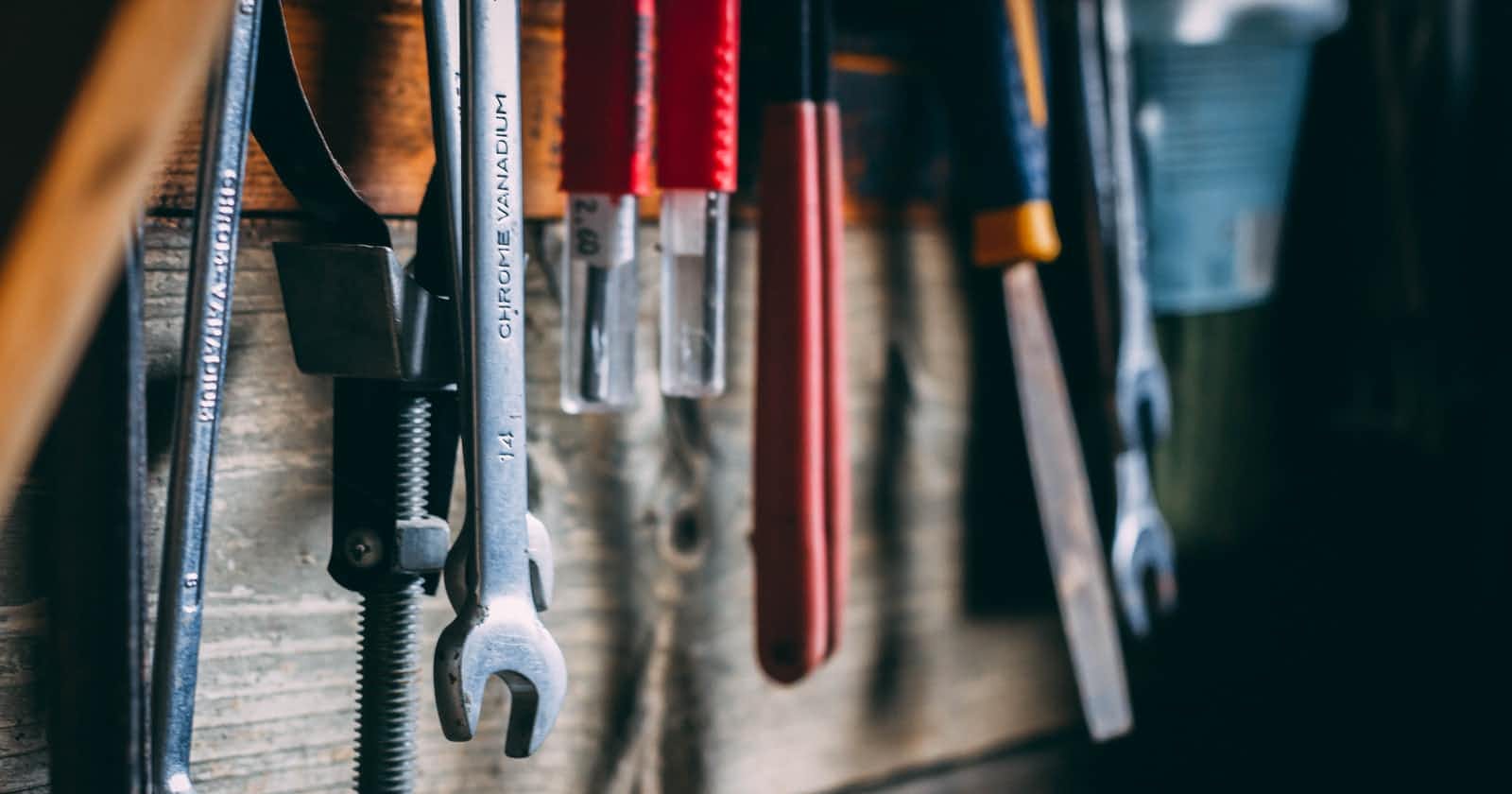
Photo by Natalino D'Amato on Unsplash
My Technical Writing 'Tech Stack' (and How I Work)
Behind the scenes tour of the product and workflows I use as a Technical Writer
Before I begin to describe the tools and workflow I use for technical writing, I am offering a bit of a warning. For a good year of my life, I became obsessed with productivity and workflow management, and apps that say they increase both. I have spent hours on Youtube watching other people's workflows, have read numerous books on note-taking and bought premium features for products I may or may not regret. I say this as a warning as this level of "dedication" is not needed to be an effective technical writer. The only thing you need for that is to write, write some more, write here, write there and keep on writing. Everything else is just cake. But here is my technical writing stack with the caveat that this works for me but may or may not work for you:
🥼 Research
As a technical writer, you will be asked to write on topics you are not an expert on. Getting paid to learn or just writing to learn is a life hack that I think everyone should strive for. The cornerstone of learning is research.
🛠 Tools: Raindrop / Command Browser / Readwise / iPad
Whenever I have a new topic I am writing about I start to collect around 20-30 articles on that topic to read. I target PDF documents as I find any Blockchain / Web3 related research papers are far more information-packed than most articles. I keep these links organized by topic and tags using Raindrop. Previously I used Pocket but the search and tagging are not as good which makes keeping things organized a nightmare.
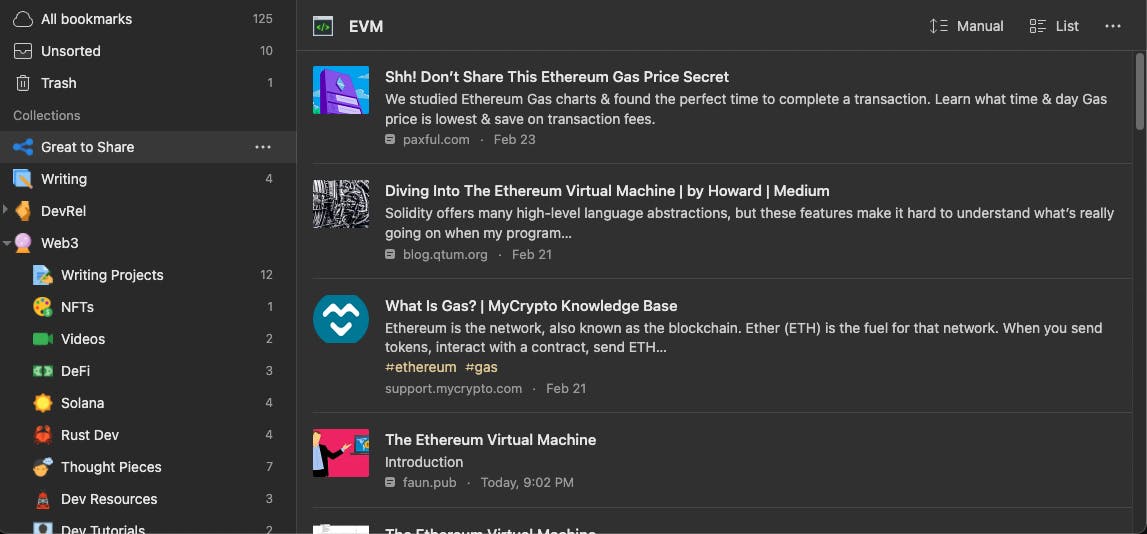
At some point in my life, I became incapable of reading things longer than an email on a computer screen. I am fortunate enough to have the luxury of owning an iPad Pro. I do all my reading (and writing) on this device. It has very minimal apps so the distraction of having the entire internet pull for my attention that I feel on a laptop is gone.
I use the Command Browser for reading the bookmarked articles in Raindrop.io. This browser has a lot of great features but the one I use is the highlighter tool. It allows me to read through any article or PDF, highlight what I think is important and this instantly gets synced to my Readwise. Readwise collects all of my highlights from articles and books as well as tweets that I may find relevant.
🏋🏽♂️ Method: Lazy Zettlekasten
If you have not heard about the Zettlekasten method here are some great resources. The idea behind the method is that the creator takes smart notes which allow for the connection of ideas to occur naturally. It also operates as a "second brain" so that you aren't stressed to try to have to recall your notes when writing on a new topic. This is done by creating three categories of notes - Fleeting Notes, Literature Notes, and Permanent Notes.
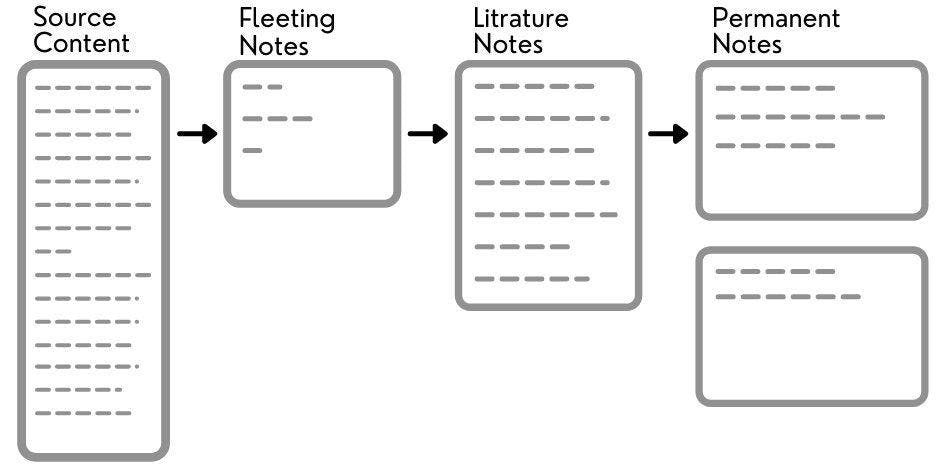
Some people are religious about these categories. Me, not so much. I normally dump all my highlights into the fleeting notes on a topic, for example, the Ethereum Virtual Network. Then I create 'literature notes' where I try to organize those highlights into certain themes on the topic. Ideally, I would make permanent notes on larger themes but in reality, I start to work on a project article from these literature notes. This is a huge no for the Zettlekasten community and I will probably lose my membership even writing this.
✍️ Writing
This might sound too poetic but I don't start writing until I feel the article is ready to jump out of my mind. What I mean by this is that from all the research and personal thinking I have done on the topic, I already have a pretty close idea of how the article will flow and even some sentences ready to go. Only until then do I crack open my text editor and get to writing:
🛠 Tools: Obsidian / iPad Pro
I do all my writing in Obsidian. Again, I have tried many alternatives like Ulsyessus and Notion. They are all good but Obsidian fits my needs like a glove. It allows me to sync between devices and different operating systems seamlessly. It's can be a simple app out of the box but you can customize it highly as there is a great community for plugins and support. I could probably write an entire article on just my Obsidian set up so I will spare you for now.
Again, I do my writing on the iPad Pro with a Logitech keyboard-case since I am not a billionaire that can afford the Apple version. This distraction-free environment helps me focus on the task of writing. Plus, I feel Obsidian works great on it since it allows me to split screen between my notes and my draft for the article.
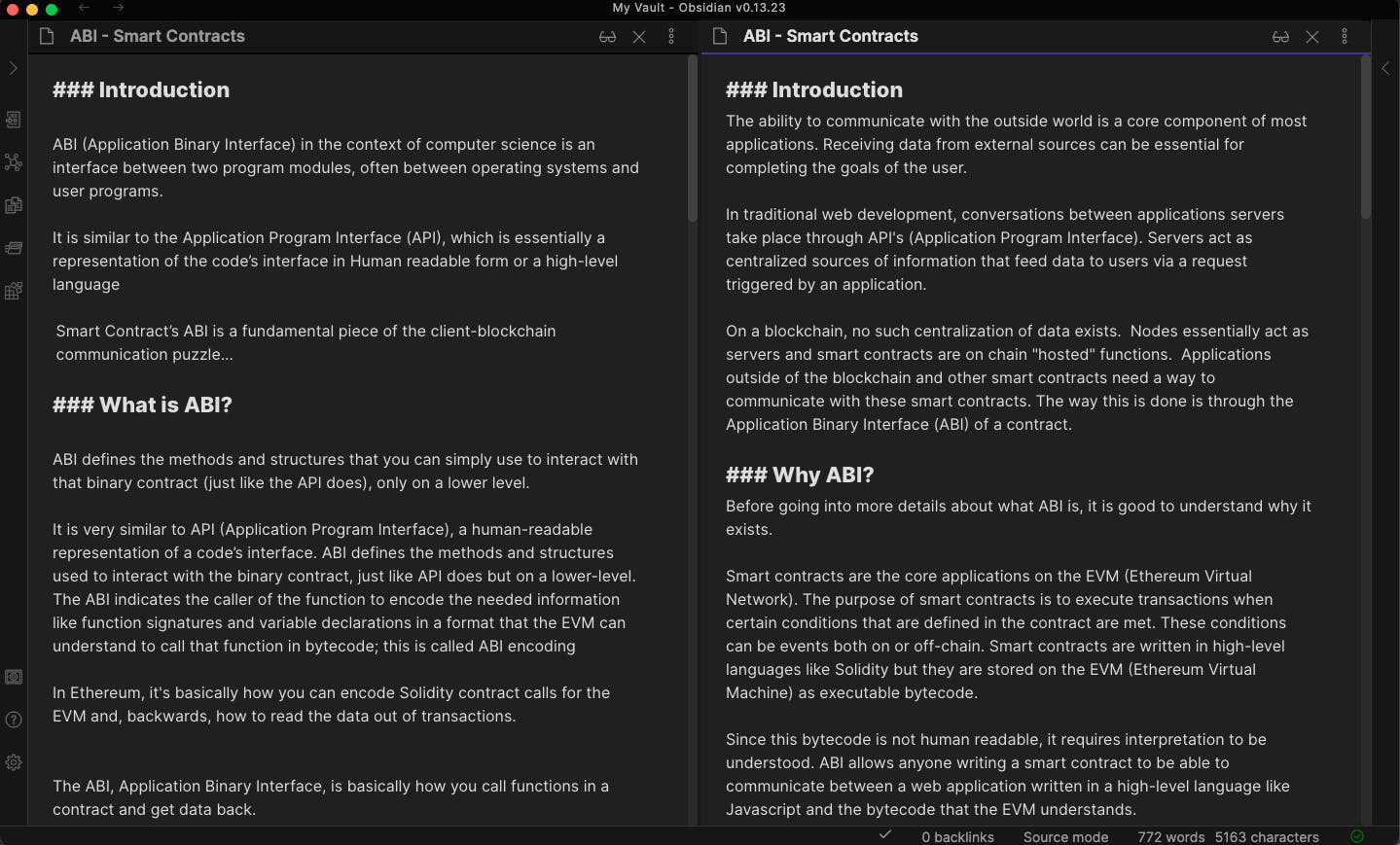
📄 Method: Just Write
I have no special approach to writing other than just to write. I am a big fan of the 'write drunk, edit sober' style. A blank page can break a person so I try to get things on the 'page' immediately. It is much easier to carve out a good article from a bad article than try to hit perfection the first time.
It is much easier to carve out a good article from a bad article than try to hit perfection the first time.
🧹 Editing
Editing is definitely what separates an ok article from a good article so this is where I spend most of my time.
🛠 Tools: Grammarly
A nice thing about my Obsidian setup is that I don't have any spell-check. This might sound weird but it's very nice to focus on typing and not get distracted by those annoying squiggly lines under every other word. My first spell/grammar check happens in Grammarly. Even as a native English speaker, English and writing well is no easy task.
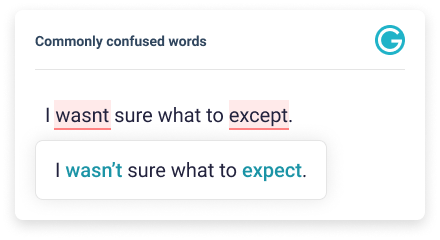
📖 Method: Reading Out Loud
Reading your writing out loud does wonders to improve your writing. I will even go so far to say that if you aren't doing this, you probably aren't editing as well as you could. Since technical writing is about explaining technical and complex topics in a way for people to understand them, clarity is a top priority.
What I get from reading out loud is also an understanding of what I thought I knew, I actually don't know as well when it's written down. This could be a certain technical aspect where I just throw in the words like 'abstraction' or 'computation' assuming the reader will know exactly what I mean (even if I don't). This normally leads me to do more research on the weaker points on certain topics that I am not as confident on.
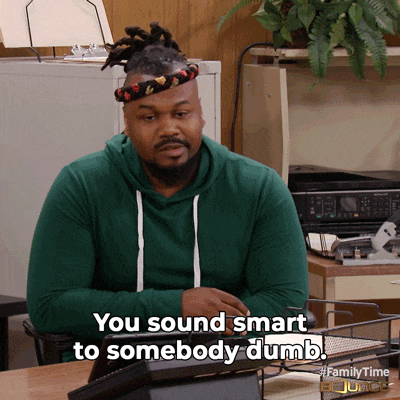
Working as a freelance technical writer has the nice benefit of having a final client check and feedback. I normally need to transfer the article in a format the client would like so I take this opportunity for a final edit as well.
So that is a bit about my 'tech stack' and technical writing process. It is an ever-evolving process as I learn about new tools and methods that might improve the workflow. My one piece of advice when starting your technical writing journey is to never marry a product or process. I loved Notion/Pocket to death at the start but as I mature as a writer rather than holding on to them for life, it's best to find replacements. These replacements can work better for you and your ways of thinking. Also, don't get sucked into what is popular or hyped, many good technical writers just use a plain text editor that gets the job done. Onwards and upwards!
